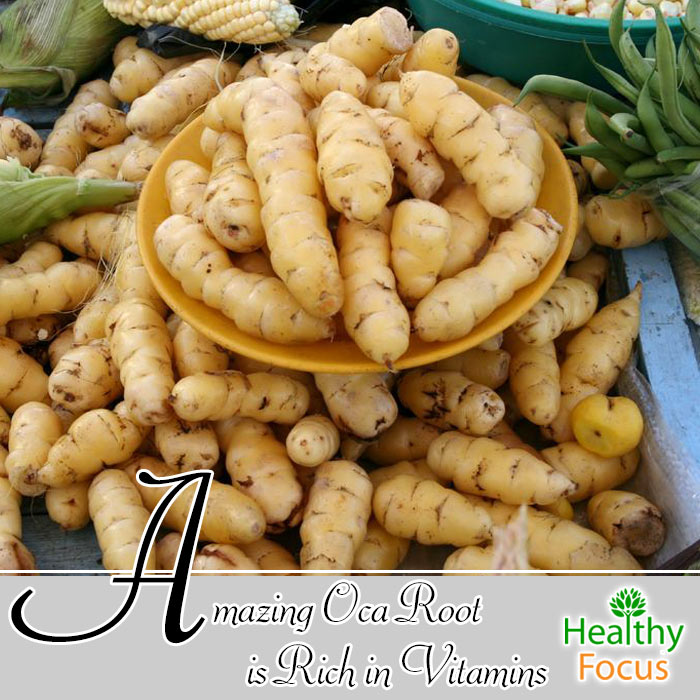What is Oca Root?
If you are from the United States or Europe, chances are, you have not heard of oca root, a tuberous vegetable native to the southern and central Andes. Oca comes from a perennial plant that is grown mainly in Bolivia, Peru, and even grown commercially in New Zealand, where it is referred to as yams.
It should be noted that Oca is not like the yams we a’re familiar with in the United States. This tuberous root vegetable is mostly known for its rich vitamin C content and can be a delicious addition to any meal.
History of Oca Root
The exact history of the oca root is currently unknown, however, its use has been traced back to the Incas. Some evidence indicates that oca root may even be one of the oldest crops grown in the Andes.
This may be due to the fact that this crop can grow in high elevations, growing in elevations as high as 13,000 feet. Because of this ability to grow in high elevations, oca root has become a dietary staple of the Andean population.
In the mid to late 1700s, for the first time, oca root was grown outside of the Andes mountain region. The crop was brought to the central highlands of Mexico and became a popular crop commonly referred to as papa roja or ratona.
Although from Mexico it was exported to the United States and Europe, efforts to sustain the crop in these regions were unsuccessful. However, in the late 19th century, oca root was exported to New Zealand and successfully sustained, however, the crop wouldn’t become popular until the 1970s.
There was a point, however, in 1835, when oca root was grown in France and studied. French chemist Jean Louis Lassaigne examined the nutritional variances of the two different types of oca root.
Nutritional Value
The biggest draw to oca root is that it is rich in vitamin C, an even greater source than potatoes, a popular source of vitamin C. In fact, oca root contains 60% of the daily-required value of vitamin C, making it a great way to boost your immune system and get essential antioxidants.
It’s important to get enough vitamin C in your diet, because vitamin C helps your body fight off infection and prevent disease. The antioxidants in vitamin C also encourage the development of healthy cells, preventing the affects of premature aging from setting in.
Oca root is also a great source of vitamin K, which is essential for helping to build healthy bones and to maintain your heart health.
B-vitamins and omega-3s are also found within oca root, which help to maintain the integrity of the nervous system and may even help prevent the development of cancer.
Oca root is also a great source of minerals. Some varieties have been found to be a rich source of iron, accounting for 70% of the daily required value. It should be noted that some varieties of oca root contain much less iron than other varieties.
Some varieties of Oca have also been found to be a great source of zinc, containing up to 12% of the daily-required value. Other minerals contained in oca root are calcium, phosphorus, and zinc, making this tuber a mineral-rich root and a valuable addition to any healthy meal.
Oca root is also known to be a nutritious part of any meal because it also contains a significant amount of fiber, which is great for digestion and maintaining heart health.
Low In Calories
If you are dieting or looking for a way to keep an eye on your calories, Oca root may be a good addition to a healthy and balanced diet. Rich in vitamins and nutrients, Oca root boasts low calorie content. One 100 gram serving of unpeeled Oca root contains only 30 calories.
How to Enjoy Oca Root
There are different ways you can eat and enjoy oca root. Oca can be eaten raw or cooked. If you want to cook oca, it can be boiled, steamed, or roasted. If you are unsure how to add oca root to your meal, try adding it to stir fry or mashing them up to make a delicious and more nutritious alternative to mashed potatoes.
If you prefer your veggies raw, oca can be washed and added to salads, providing a nice crunch and nice, sheer tangy flavor.
Storing Oca Root
Oca can be sliced and dried. Dried oca root is a great addition to soups and stews. Fortunately, oca holds on to its brilliant red color during this process, making it an attractive addition to any soup or meal.
In terms of general storage, Oca can be stored like a potato, which is best suited in cool, well-ventilated areas.
Some Considerations
All benefits associated with oca root have not been subjected to rigorous scientific tests. All findings are merely preliminary.
Those that suffer from kidney stones and gout may want to avoid consuming oca root, as some varieties of the root contain oxalic acid. Some varieties of oca have been found to contain roughly the same amount of oxalic acid as brussel sprouts, garlic, snap beans, and carrots at about 80 to 200 mgs.
Oxalic acid is what provides oca root with its tangy sour flavor. The majority of oxalic acid is likely found in the skin of oca root, so peeling the root may greatly reduce the oxalic acid content. However, there is no scientific studies done to back this up.
If you are on blood thinners you may want to avoid Oca root due to its Vitamin K content. Check with your doctor to be safe.

Leave a Reply
You must be logged in to post a comment.